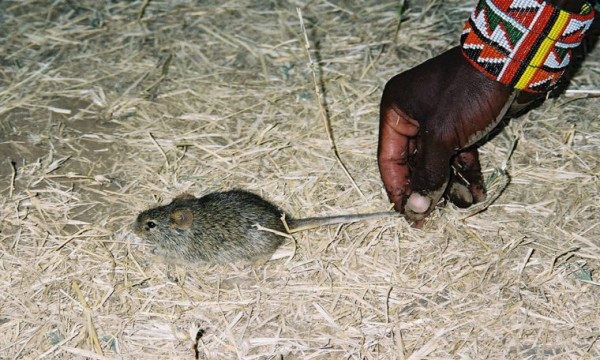By Ana Verayo, | March 28, 2017

A mouse from a Maasai village in southern Kenya.
A new study suggests how the house mouse is apparently the oldest "domesticated" animal according to scientists. These creatures are generally considered as pests but they have been living inside our homes for around 15,000 years, longer than dogs have with humans.
Mice are known to have evolved from their wild ancestors however, everything changed when humans started to grow crops and develop agricultural practices. Mice certainly became attracted to massive storage of food in farms that started some 12,000 years ago.
Like Us on Facebook
In this new study, scientists have found crucial evidence regarding mice being domesticated pets in the Middle East. More specifically, to prehistoric humans who are Natufian hunter gatherers and not farmers, in the Levant region within the Jordan Valley, who have long attracted these rodents.
This type of domestication is used by prehistoric humans for mice to become pets and for these animals to serve a higher purpose. This higher purpose involves mice being laboratory test subjects used for medical trials. According to Fiona Marshall of Washington University in St.Louis, wild mice have already figured out that humans are a major source of food and shelter, confirming that they have been linked to humans earlier than previously thought.
An international team of scientists studied remains of fossilized teeth of the Mus musculus domesticus or the common house mouse and the short tailed field mouse, the Mus macedonicus. Scientists suggest that in a span of thousands of years, these two mice species have grown in different population numbers dividing into two different types.
Marshall explains, this research provides the first evidence of how humans have been living in one place for such a long time that it already made an impact to the ecosystems and local animal communities, as early as 15,000 years ago.
Scientists call this early relationship with humans as "commensalism" which is an early stage of the domestication process. This is exactly when animals realized that continuous human contact is beneficial to their survival.
According to Lior Weissbrod from the Haifa University in Israel, wild mice and house mice populations have been fulctuating since human communities have been migrating during dry periods and when humans decide on permanent settlements.
Weissbrod explains, these new findings now suggest that the Natufian culture's hunter gatherers were the first to adopt a sedentary way of living and not Neolithic farmers, which occurred later on. This unintentionally started a new type of ecological interaction where there is a coexistential relationship with a commensal species like the house mouse.
This new study is published in the journal Proceedings of the National Academy of Sciences.
-
Use of Coronavirus Pandemic Drones Raises Privacy Concerns: Drones Spread Fear, Local Officials Say

-
Coronavirus Hampers The Delivery Of Lockheed Martin F-35 Stealth Fighters For 2020

-
Instagram Speeds Up Plans to Add Account Memorialization Feature Due to COVID-19 Deaths

-
NASA: Perseverance Plans to Bring 'Mars Rock' to Earth in 2031

-
600 Dead And 3,000 In The Hospital as Iranians Believed Drinking High-Concentrations of Alcohol Can Cure The Coronavirus

-
600 Dead And 3,000 In The Hospital as Iranians Believed Drinking High-Concentrations of Alcohol Can Cure The Coronavirus

-
COVID-19: Doctors, Nurses Use Virtual Reality to Learn New Skills in Treating Coronavirus Patients







